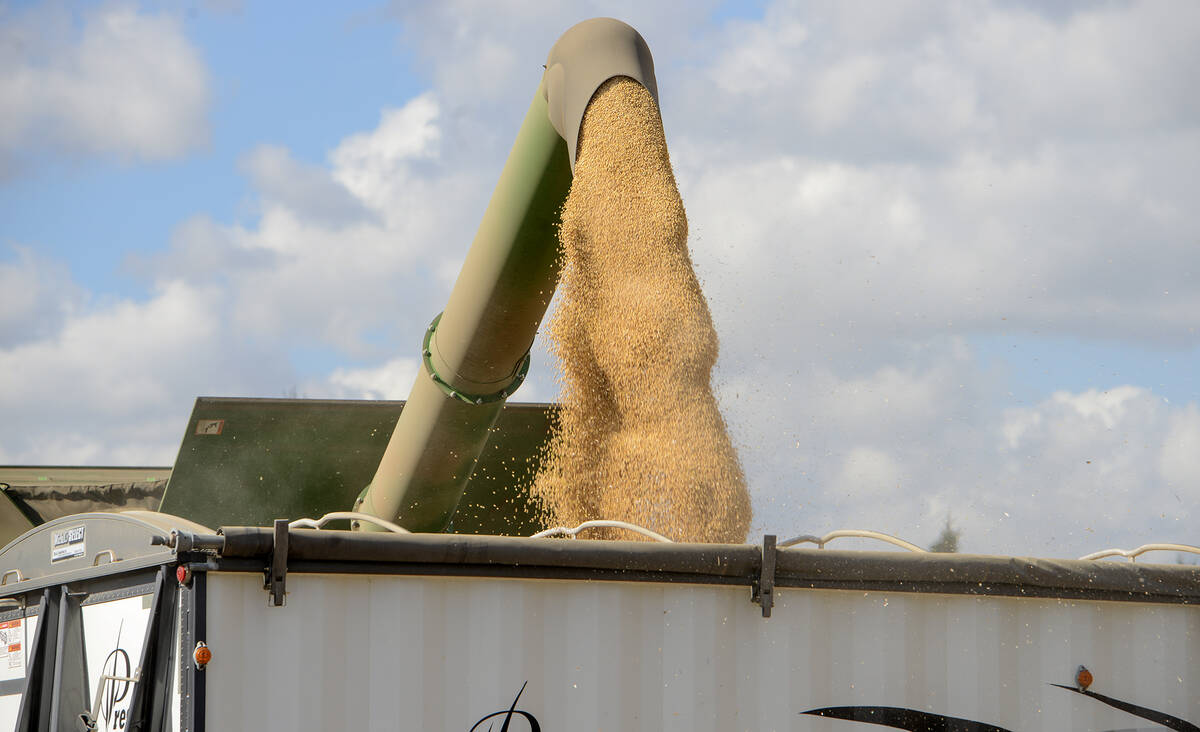Canola contracts on the ICE Futures Canada platform moved lower during the week ended Oct. 7, although the downward slide of the past month did show some signs of slowing down.
The November contract dipped to the $517-per-tonne level on a number of occasions during the week, moving as low as $516.10 per tonne on Friday. However, support came forward every time, and the contract has yet to close below $518 during the current downtrend. Some of the support was tied to end-user bargain hunting, with both exporters and domestic crushers said to be taking advantage of the recent weakness to book some coverage. Reluctant farmer selling was also said to be providing support.
Read Also

Grain markets hungry for U.S. data
The U.S. government shutdown meant that futures markets were left without robust grain supply information
While many market participants predict a short-covering bounce in the oversold canola market, the general consensus remains relatively bearish overall, especially given the uncertain global economic situation that continues to percolate in the background.
Statistics Canada released updated production estimates on Oct. 4, pegging this year s canola crop at 12.9 million tonnes, which compares with the recently revised 12.8-million-tonne crop grown the previous year. While 12.9 million tonnes would be a new record for canola production, market participants had anticipated a crop of over 13.5 million, with some forecasts coming in above 14 million.
Only a couple months ago StatsCan had the 2010 canola crop nearly a million tonnes smaller, at 11.9 million, but had to revise that number higher in September when the supply/ demand numbers didn t add up.
Revisions such as that definitely lead to some questions, a key one being: Are farmers lowballing their production estimates when reporting to StatsCan? From a marketing standpoint, it does make some sense to float the idea that the crop may not be as large as it actually is. After all, basic economics dictate that tighter supplies lead to higher prices.
However, those supplies may only be tighter on paper, and most industry participants still expect larger actual inventories in the countryside, given some of the yield reports coming in over the harvest period.
Nearby supplies
In the U.S., the soybean and corn harvests are still in their early stages, and the increased availability of nearby supplies could limit the upside potential in both crops for at least the next month.
Corn did manage a bit of a short-covering correction during the week, while soybeans failed to hold on to any attempts at a bounce and moved lower overall.
While harvest pressure should limit any nearby gains in soybeans and corn, there may not be much room to the downside either and both commodities could see some range-bound activity with solid demand coming forward underneath the market in both commodities.
The U.S. Department of Agriculture releases updated supply/demand tables on Oct. 12, and any surprises in the report could provide a nearby jolt, one way or the other, to the futures.
Wheat futures in Chicago were all over the place, ending mixed on the week. Concerns over dryness hurting winter wheat in the southern Plains were alleviated somewhat by improving moisture conditions in the region.
Meanwhile, U.S. wheat continues to be overpriced in the international market, losing out on export business to cheaper Black Seaorigin supplies.
Spring wheat in Minneapolis was also mixed, with the nearby December contract posting large gains on production and quality concerns, together with a lack of farmer selling. However, the more deferred positions softened with the other grain markets.
Larger global economic issues remain a key influence on all agricultural commodities, and depending on which way the wind is blowing from one day to the other, the resulting flows of speculative money should continue to push the agricultural commodities back and forth, regardless of the fundamentals.
Phil Franz-Warkentin writes for Commodity News Service Canada, a Winnipeg company specializing in grain and commodity market reporting.
———
For three-times-daily market reports from Commodity News Service Canada, visit ICE Futures Canada updates at www.manitobacooperator.ca.















